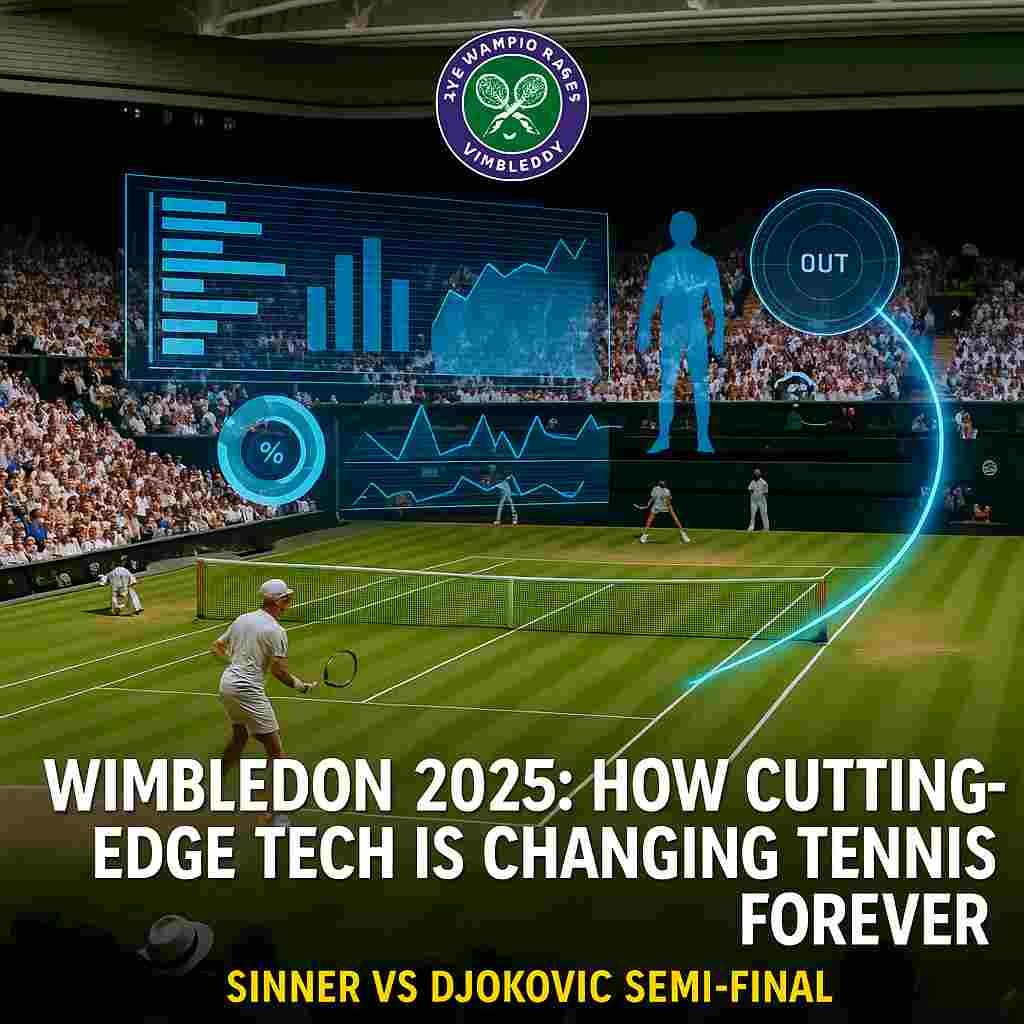Wimbledon may be steeped in tradition—from strawberries and cream to all-white attire—but behind the heritage lies a quiet technological revolution. In 2025, the tournament isn’t just about world-class athletes and dramatic rallies; it’s also about artificial intelligence, real-time data analytics, and high-precision systems redefining how tennis is played, viewed, and judged. Wimbledon has become a shining example of how sports and technology can co-exist without losing the essence of the game.
Hawk-Eye and the End of Human Error
The most iconic and now irreplaceable technology at Wimbledon is Hawk-Eye. It uses multiple high-speed cameras positioned around the court to track the ball’s trajectory and predict its landing point with extreme accuracy. In 2025, Hawk-Eye has become even more precise, operating with sub-millimeter accuracy, reducing player frustration and increasing fan confidence in calls. With line judges now partially replaced by this system, the game is smoother, faster, and less prone to controversy.
This was especially evident in the epic Sinner vs Djokovic semi-final, where several high-stakes points were decided by mere millimeters. Jannik Sinner, known for his powerful baseline play, challenged a close serve late in the third set. Hawk-Eye confirmed the ball had just clipped the line, saving Sinner from what would’ve been a crucial double fault. The technology’s ruling not only shifted momentum but added a new dimension to the psychological warfare on court.
AI and Real-Time Match Analytics
Beyond line calls, Wimbledon 2025 is leveraging AI and machine learning for real-time match insights. Advanced algorithms analyze shot selection, player movement, and fatigue indicators, feeding this data to coaches and broadcasters instantly. These insights not only help players fine-tune their strategy mid-match but also enhance the viewer experience by offering deeper context to every rally.
During the Djokovic vs Sinner match, commentators used live AI data to showcase how Djokovic’s return placement had shifted subtly in the fourth set—a tactical move to counter Sinner’s improving first-serve percentage. These insights created a more immersive narrative, making fans feel like insiders with tactical knowledge once reserved for elite coaches.
Smart Wearables and Player Health
Health tracking has also stepped into the spotlight. Select players at Wimbledon 2025 are testing smart wearables embedded in their clothing or wristbands. These devices monitor hydration, core temperature, heart rate variability, and muscle exertion in real-time. Although not yet mandatory or widely adopted, this pilot program is shaping the future of injury prevention and player longevity.
While Novak Djokovic, the veteran, opted for traditional routines, younger players like Sinner are embracing data-driven training. His post-match interview confirmed that his team closely monitored his hydration and recovery metrics between sets—especially in the sweltering London heat. Such insights could mean fewer injuries and longer careers for modern athletes.
Fan Experience: AR, VR, and AI Commentary
Technology isn’t just enhancing the court—it’s transforming the stands and screens. Wimbledon 2025 has introduced an upgraded mobile app offering augmented reality features that allow fans to point their phones at the court and view real-time stats. At home, viewers can now choose between classic commentary or AI-powered tactical analysis, making tennis more accessible and educational for casual fans.
Virtual reality is also gaining traction. Some premium ticket holders enjoyed immersive VR replays of key moments like the match point in the Sinner vs Djokovic thriller, which ended in a five-set marathon that many are already calling a modern classic. Whether it was the depth of Sinner’s backhand or Djokovic’s ability to extend rallies, tech made it all more visible, shareable, and unforgettable.
In conclusion, Wimbledon 2025 marks a turning point in the evolution of tennis—not just as a sport but as a tech-powered spectacle. As players push physical boundaries, technology ensures they’re equipped, analyzed, and supported like never before. The rivalry between youth and experience, as seen in the electric Sinner vs Djokovic semi-final, becomes even richer when enhanced by data, precision, and smart innovation. Tradition may define Wimbledon’s charm, but it’s the invisible power of technology that now defines its future.



